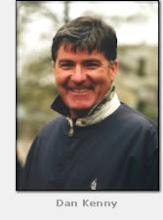Everyone seems to have a Tiger Woods story nowadays. This one is PG-13 so you can tell it to your kids.
In the spring of 1982 I was living on a small ranch in Central California. I had just been hired by ESPN to do the first live show of 4 1/2 hours from Churchill Downs on Kentucky Derby day.
Our producer was Scotty Connell, a NBC-Sports executive who had signed up with the fledgling cable network. Jim Simpson, Lou Palmer and I did the commentary.
Connell noted my California address and told me that he had signed up Sandy Koufax as a baseball announcer for NBC but it hadn’t worked out. Sandy was too private a person, he said, for network television.
Sandy lived a mile or so down River Road from my place near Templeton. Los Alamitos owner Ed Allred had a quarter horse ranch across the road from Rio Vista, a one time bustling stallion operation run by the Dollase family. Cardiff Stud was another neighbor.
Connell arranged an introduction to Sandy and we became fast friends who played late Sunday afternoon rounds at the Chalk Mountain muni in Atascadero. Sandy had recently left the Paso Robles country club, fed up with a wicked duck hook that shot his handicap up from scratch into double figures.
Chalk Mountain suited our purposes because we could play quickly and in complete privacy, a must for Sandy. We would have one beer afterward, never two, and baseball was not to be discussed.
One Sunday afternoon was different. The pro checked us in at the double-wide trailer that served as his shop.
“Take time to watch the kid on the practice tee,” he said. “You’ll be hearing from him one day.”
One swing was all it took for a 6-year-old to reveal himself as Tiger Woods, having a lesson with his father Earl. We watched him hit a few balls in silence and duly noted the
incipient talent which was already causing a buzz in California junior golf circles.
Next time I saw Tiger he was winning the 1997 Masters by 12 shots. Sandy and I bumped into each other less frequently after moving farther south to Santa Barbara.
Sad to see his name listed a year ago among victims of swindler Bernie Madoff.
Into every life some rain must fall.
